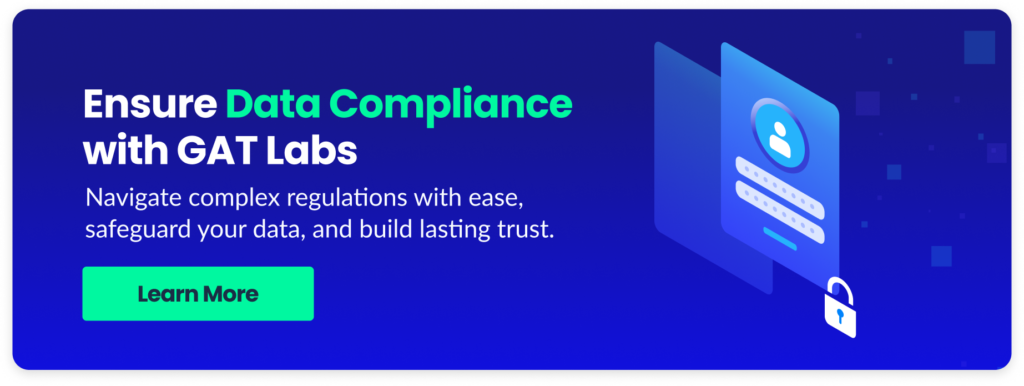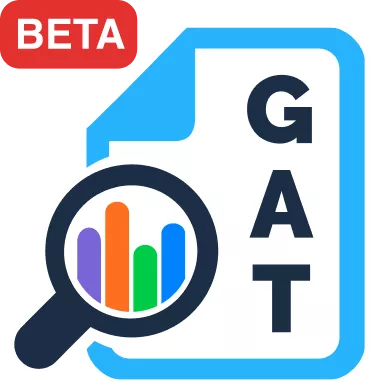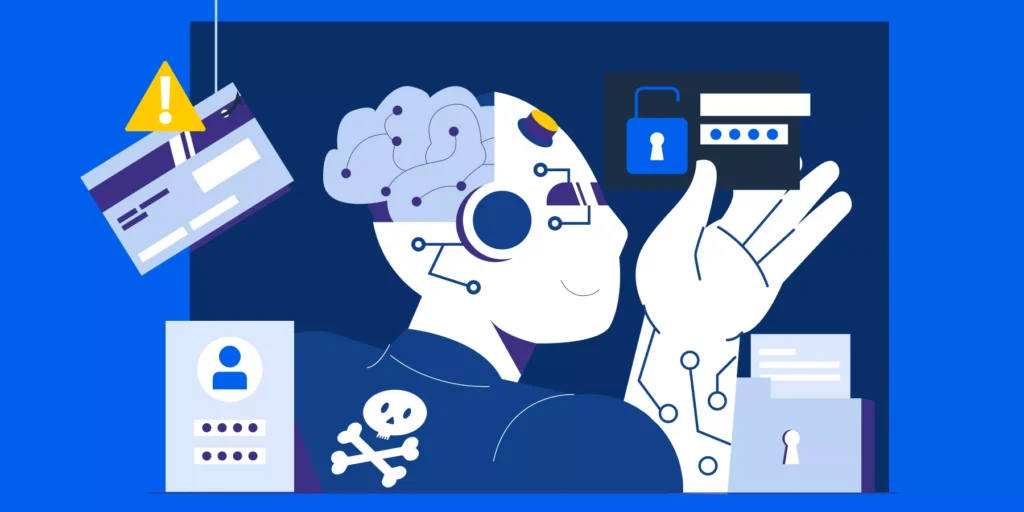What is Data Governance?
Data governance is the framework for managing data availability, usability, integrity, and security in an enterprise. It involves a set of processes, policies, standards, and metrics to ensure the effective and efficient use of information, enabling an organisation to achieve its goals.
Data governance is the foundation for achieving robust data compliance. It establishes a framework for managing your organisation’s data effectively, ensuring it’s accurate, secure, and aligns with relevant regulations. By implementing data governance practices, you proactively manage your data, minimizing the risk of non-compliance and potential fines. Think of data governance as building a strong house for your data. A well-built house is less susceptible to security breaches, just like good data governance practices make your data less vulnerable to compliance issues.
Key Components of Data Governance
An effective data governance program addresses three key elements:
- What data to govern: Identifying and classifying the types of data that need governance.
- How to govern data: Establishing the processes, policies, and standards for data management.
- What organisational mechanisms are required to govern data: Defining the roles and responsibilities within the data governance framework.
What is a Data Governance Framework?
Data governance frameworks are essentially blueprints for managing your organisation’s data effectively. They provide a structured approach to ensure the data you collect, store, and use is:
- ✔️ Accurate and reliable: You can trust your data to make informed decisions.
- ✔️ Consistent and usable: Data is defined and formatted consistently across the organisation, making it easier to integrate and analyse.
- ✔️Secure and compliant: Your data is protected from unauthorised access and meets all relevant regulations.
- ✔️ Accessible and discoverable: Users can easily find the data they need.
Here are some key aspects of a data governance framework:
- ▪️ Policies and Standards: These define the rules and guidelines for data handling, including data quality, security, access controls, and retention policies.
- ▪️ Processes and Procedures: These outline the specific steps for how data is collected, stored, managed, and used.
- ▪️ Roles and Responsibilities: This clarifies who is accountable for different aspects of data governance, as discussed previously with common data governance roles.
- ▪️ Technology Tools: These can include data management platforms, data quality tools, and access control systems to automate and support data governance activities.
There isn’t a one-size-fits-all framework. The specific framework you choose will depend on your organisation’s size, industry, and data maturity level.
However, most frameworks are built on four core pillars:
- Data Quality: Ensuring data is accurate, complete, and consistent.
- Data Integration: Simplifying the process of combining data from different sources.
- Data Security and Privacy: Protecting data from unauthorised access and ensuring compliance with regulations.
- Data Accessibility and Usability: Making data discoverable and easy for authorised users to find and use.
By implementing a data governance framework, you can unlock the true potential of your data and make data-driven decisions with confidence.
Common Data Governance Roles
There are several key roles involved in data governance, each with specific areas of focus. Here’s a breakdown of the most common ones:
- ▪️ Executive Sponsor(s): These are high-level executives, like the CEO, CFO, or CIO, who champion the data governance initiative. Their leadership and support are crucial for the program’s success.
- ▪️ Data Governance Council (DGC): This is a cross-functional group responsible for setting the overall data governance strategy and policies. It often includes representatives from IT, business units, and legal departments.
- ▪️ Data Steward(s): These are business-oriented individuals accountable for a specific data asset or domain. They ensure the data is accurate, used appropriately, and aligned with business needs.
- ▪️ Data Custodian(s): These are IT professionals responsible for managing the technical aspects of data storage, security, and access controls. They ensure the data is secure and available to authorised users.
- ▪️ Data Administrator(s): These are IT professionals who handle day-to-day data management tasks like creating user accounts, managing access permissions, and performing backups.
- ▪️ Data User(s): This refers to anyone who accesses or uses data within the organisation. They need to be aware of data governance policies and use data responsibly.
It’s important to note that the specific titles and responsibilities may vary depending on the organisation’s size and structure. However, these core roles provide a good foundation for establishing a successful data governance program.
Who Needs to Comply with Data Governance?
In essence, everyone within an organisation that interacts with data in some way needs to comply with data governance. Here’s a breakdown of the different parties involved:
- ▪️Executive Leadership: They play a crucial role in setting the tone and providing support for the data governance program. Their commitment is essential for its success.
- ▪️Data Governance Team: This dedicated group, which may include a data governance council, stewards, custodians, and administrators, is directly responsible for developing, implementing, and enforcing data governance policies and procedures.
- ▪️ Business Users: Anyone who accesses or uses data for their work, from marketing teams to sales representatives and analysts, needs to be aware of and adhere to data governance practices. This ensures data is used responsibly and for its intended purposes.
- ▪️ IT Department: IT professionals play a critical role in implementing the technical aspects of data governance, such as data security, access controls, and data storage solutions.
While specific responsibilities may vary depending on the organisation’s structure, everyone who interacts with data has a stake in data governance. By working together, they can ensure the organisation uses data effectively and responsibly.
Why Should Businesses Care About Data Governance?
▪️ Enhanced Security: Data governance ensures a robust infrastructure, making it harder for cyber threats to penetrate and disrupt operations. A stronger infrastructure not only limits the spread of attacks but also enhances employees’ and executives’ understanding of cybersecurity, fostering greater cooperation around security issues.
▪️ Regulatory Compliance: Data governance and compliance go hand-in-hand. Data governance aligns data handling practices with regulatory requirements, such as GDPR and HIPAA, reducing the risk of legal penalties.
▪️ Access to Government Contracts: For businesses working with the U.S. government, compliance with data governance standards is crucial. It opens doors to government contracts that might otherwise be unattainable.
▪️ Competitive Advantage: Compliance with data governance standards can give you an edge over competitors. Companies prefer subcontractors who can guarantee data protection and compliance with data governance standards.
▪️ Reputation Protection: Adhering to data governance standards helps protect customer data, preventing breaches that can damage your organisation’s reputation.
▪️ Broader Trust and Confidence: With frequent cybersecurity threats, businesses are more likely to support companies that demonstrate a commitment to data security. Adhering to these standards shows that your organisation is responsible with its data and considerate of its customers.
Taking Steps Towards Data Governance Compliance
- Understand the Framework: Firstly and most importantly, familiarise yourself with the data governance framework and how it applies to your business.
- Conduct a Risk Assessment: Identify potential cybersecurity risks and vulnerabilities in your systems.
- Develop and Implement Controls: Establish and implement controls based on the data governance framework to mitigate identified risks.
- Continuous Monitoring and Improvement: Regularly monitor your cybersecurity posture and make necessary improvements to stay compliant.
- Employee Training: Provide ongoing training to employees about data governance guidelines and your company’s cybersecurity policies.

Data Governance and GAT Labs
Achieving effective data governance can be a complex task. However, GAT Labs provides a comprehensive suite of tools specifically designed to simplify compliance auditing and effectively manage enterprises’ Google Workspace domains.
Key Solutions for Data Governance
- ✔️ Data Auditing and Reporting: GAT+ provides detailed analytics and insights into data usage and behaviour within Google Workspace, helping organisations monitor and manage data effectively.
- ✔️ Secure Data Access: GAT Unlock facilitates secure access to documents and allows changes in document ownership with proper authorisation, ensuring data integrity and compliance.
- ✔️ User Management: GAT Flow streamlines user onboarding, offboarding, and bulk modifications, ensuring proper data handling throughout the user lifecycle.
- ✔️ Browser Security: GAT Shield offers continuous monitoring and three-factor authentication for Chrome users, enhancing data security.
By leveraging GAT Labs’ solutions, organisations can achieve robust data governance, ensuring data quality, security, and compliance with regulatory requirements.
Insights That Matter. In Your Inbox.
Join our newsletter for practical tips on managing, securing, and getting the most out of Google Workspace, designed with Admins and IT teams in mind.







